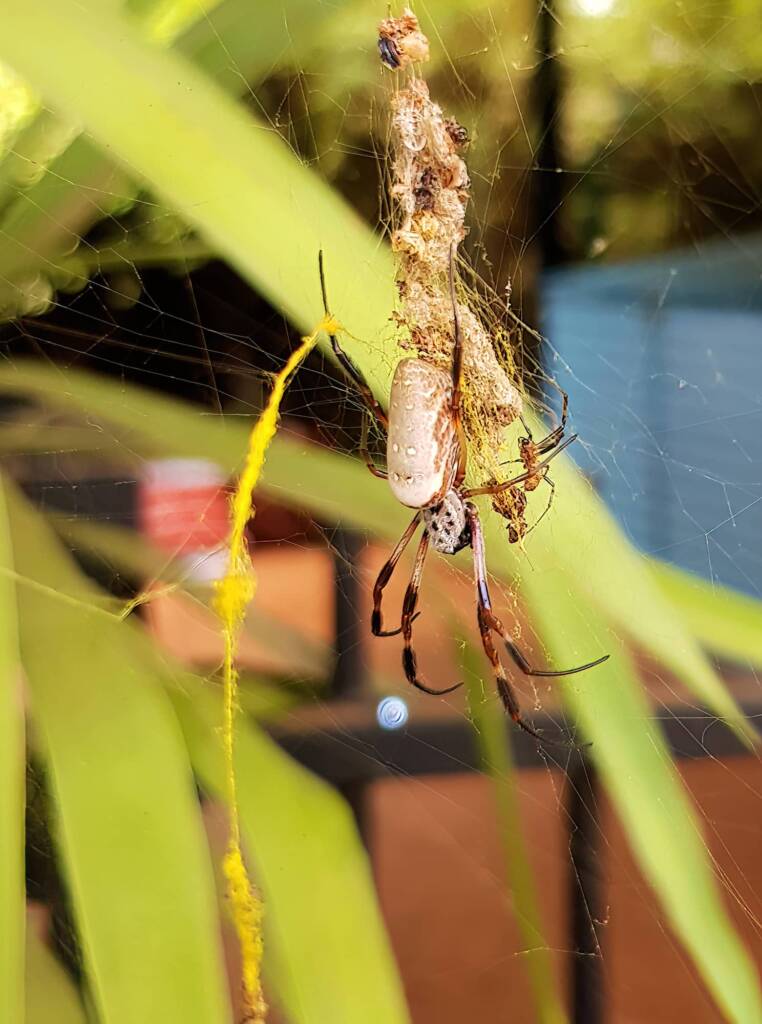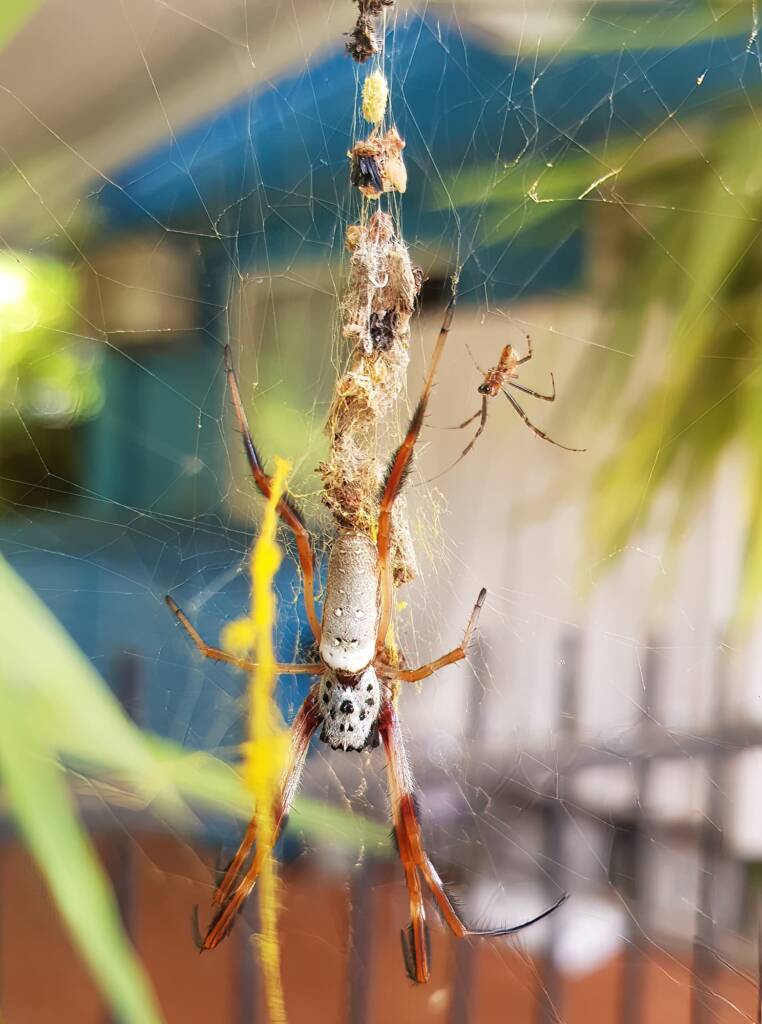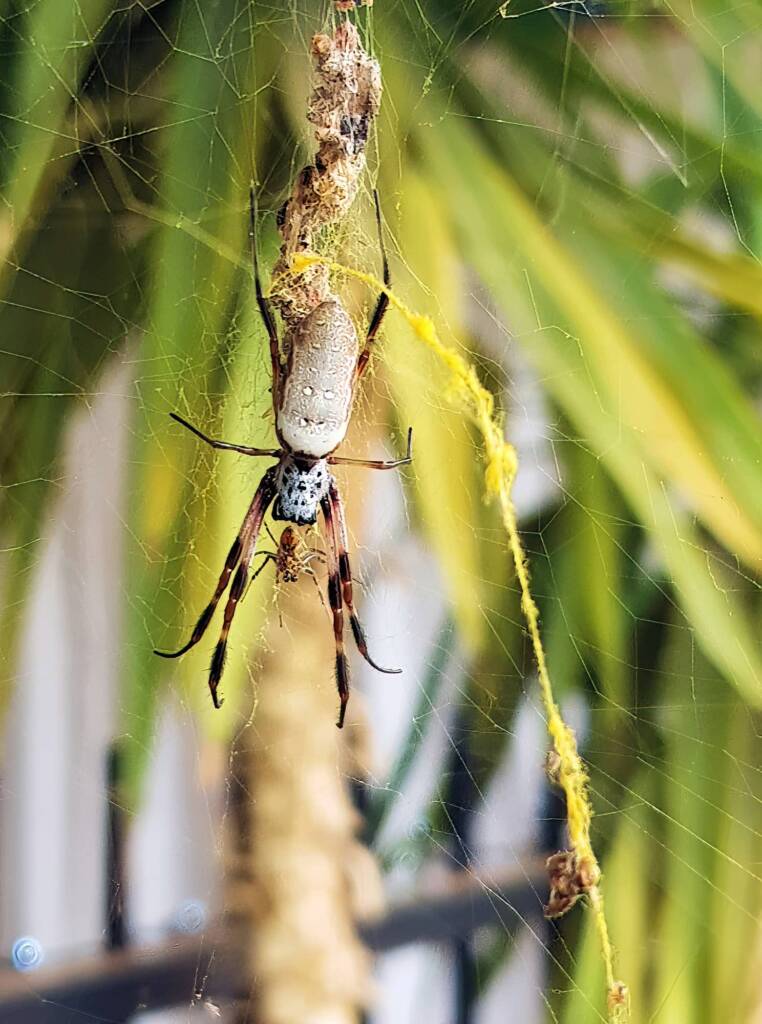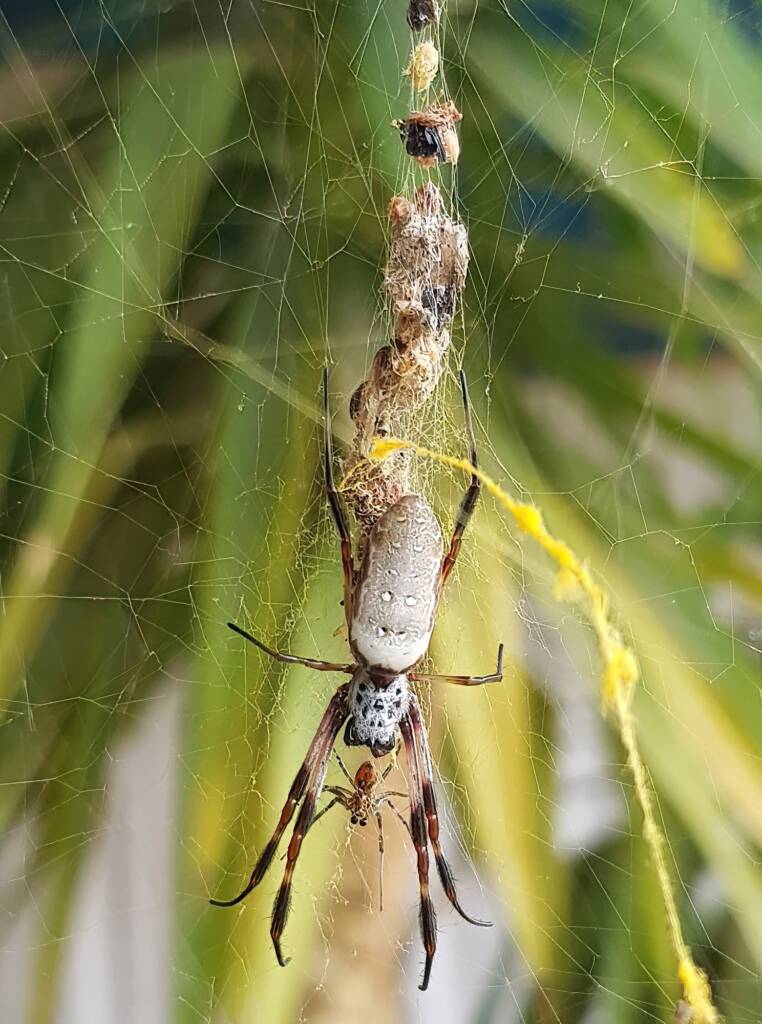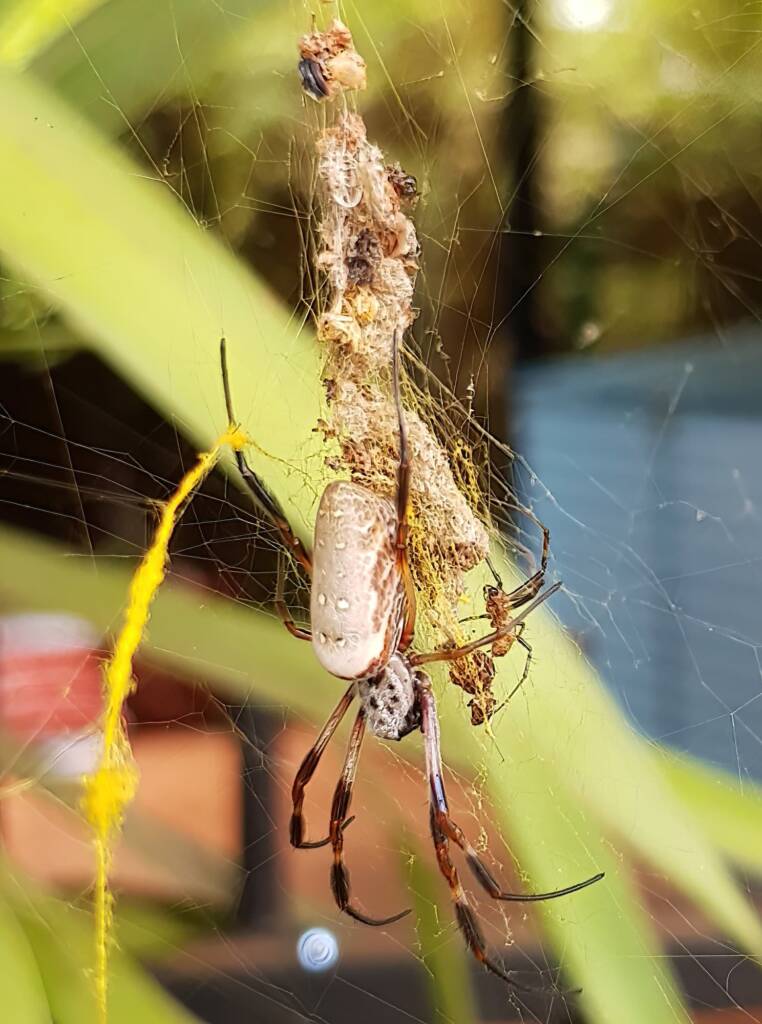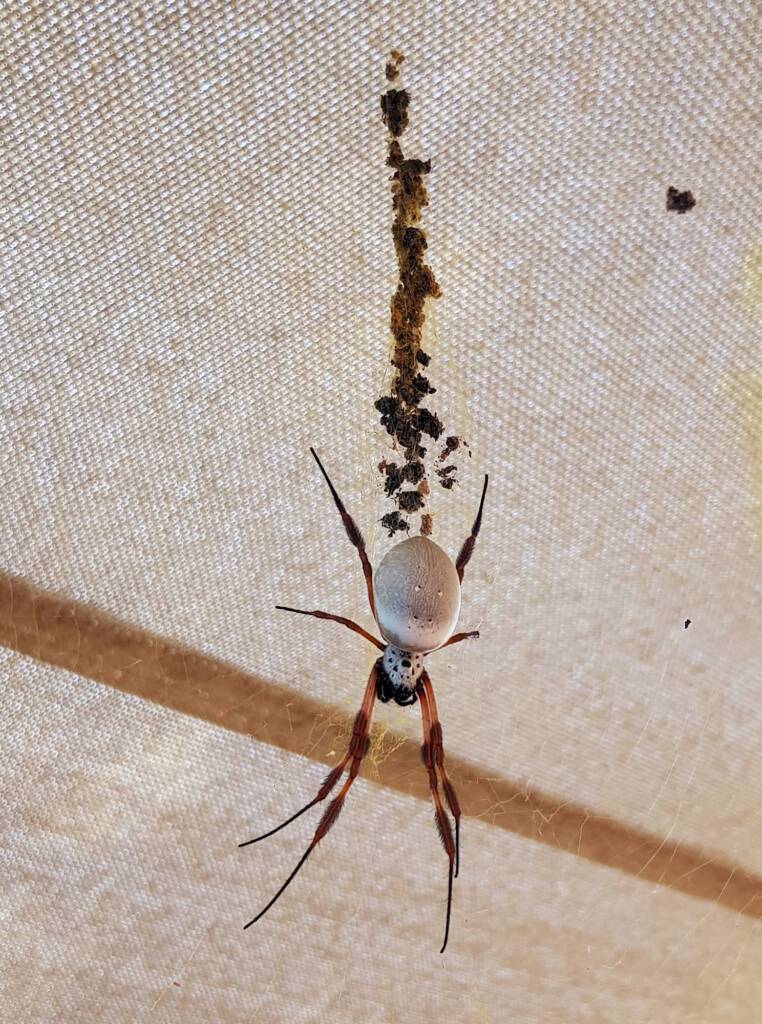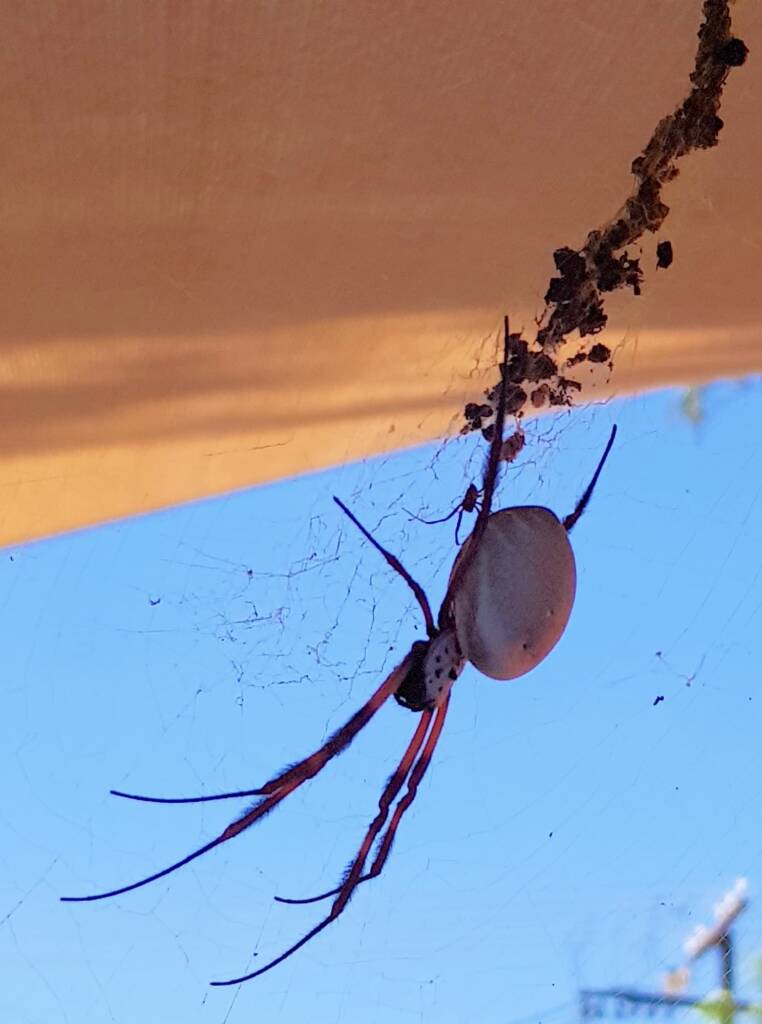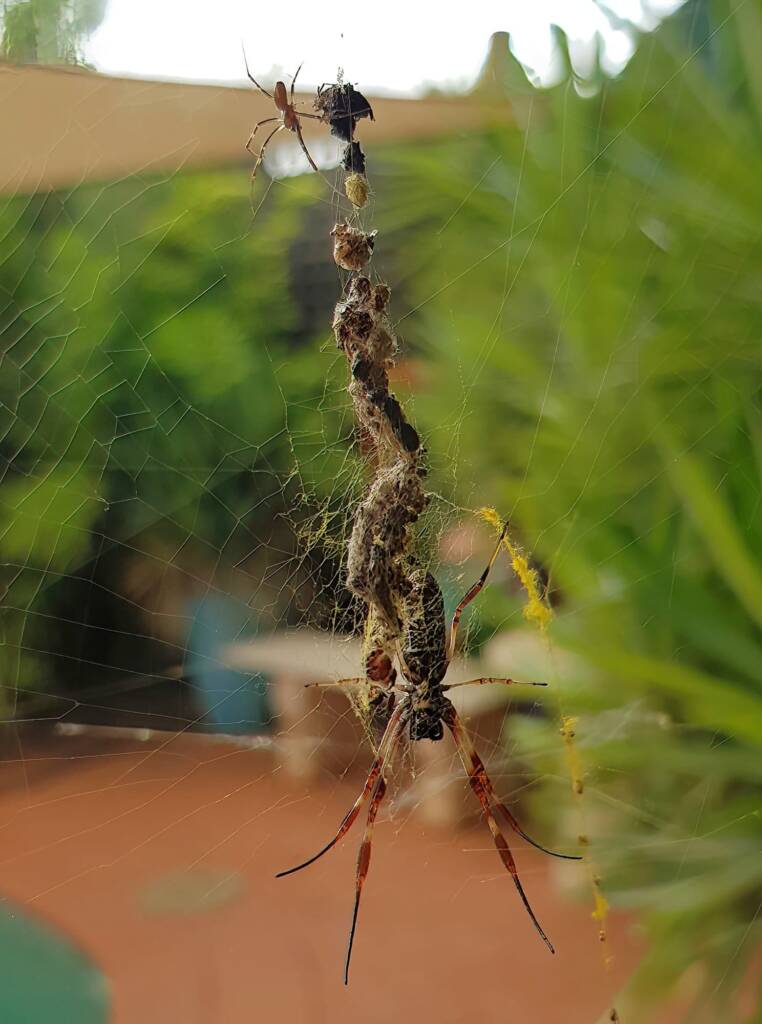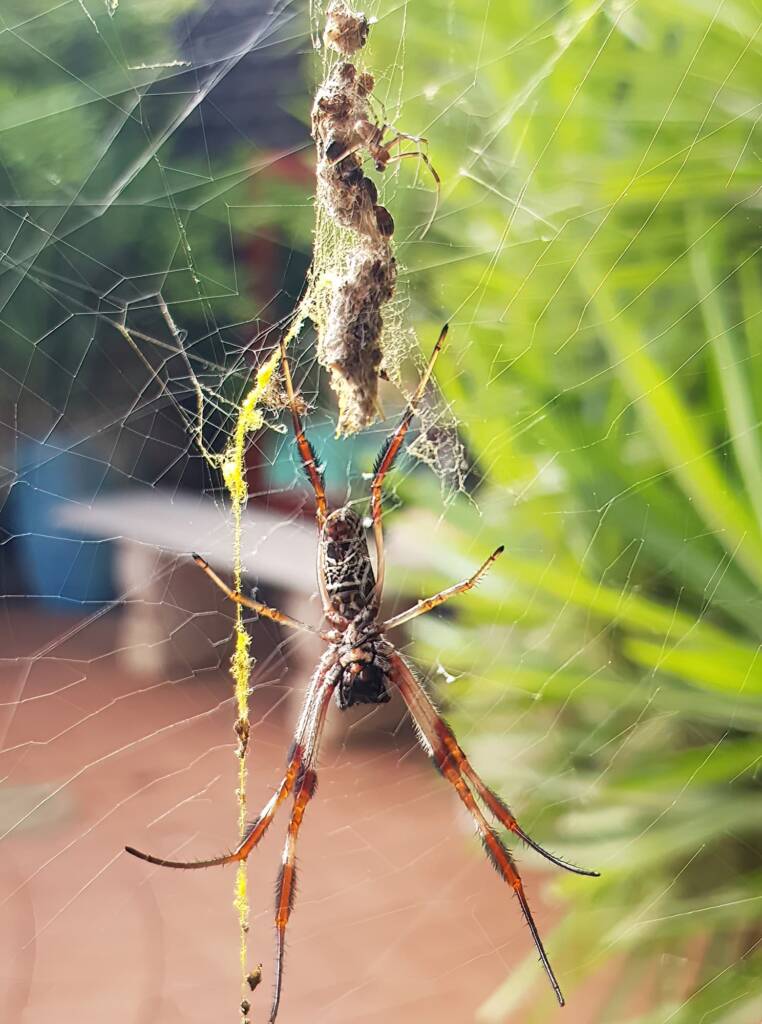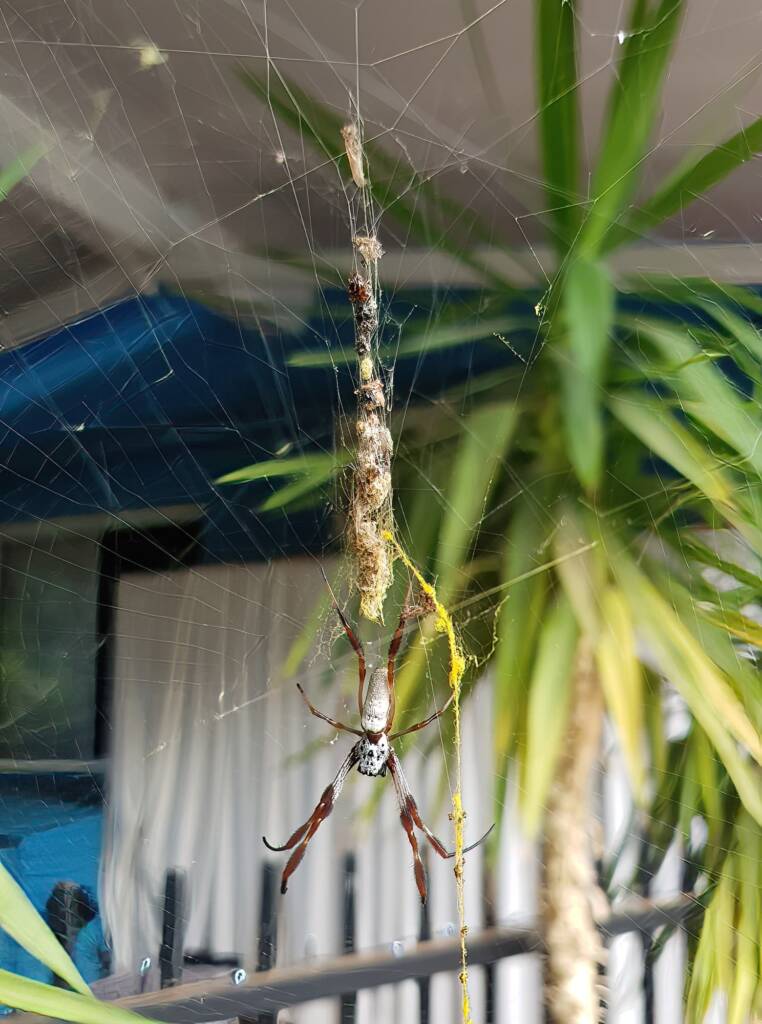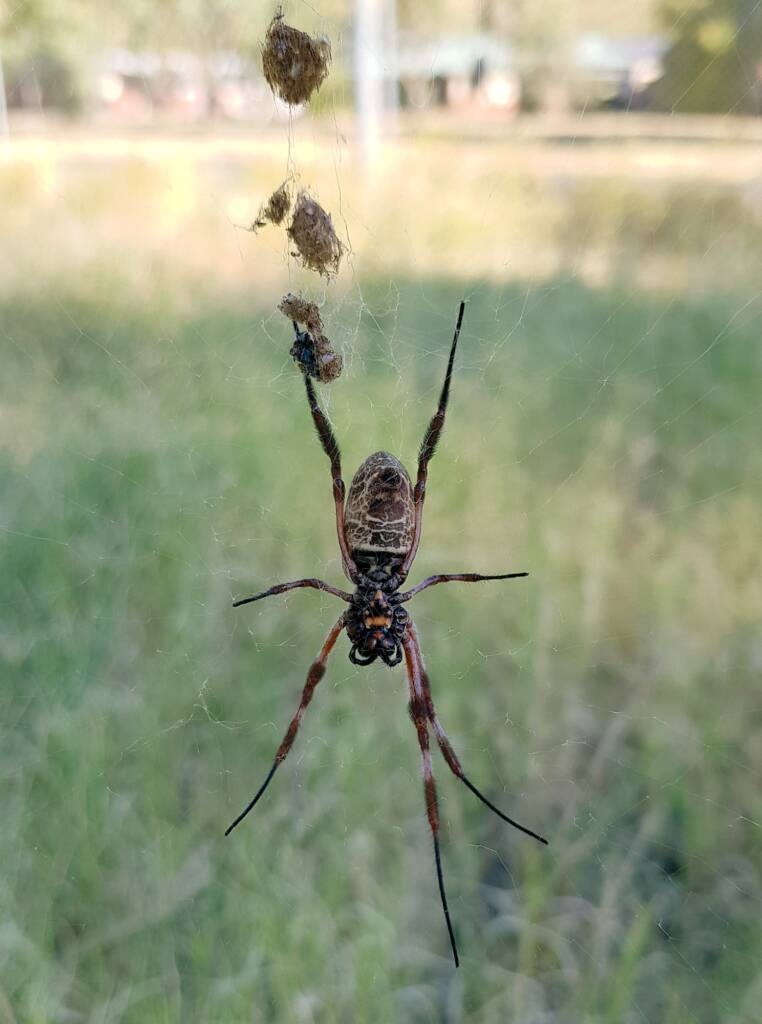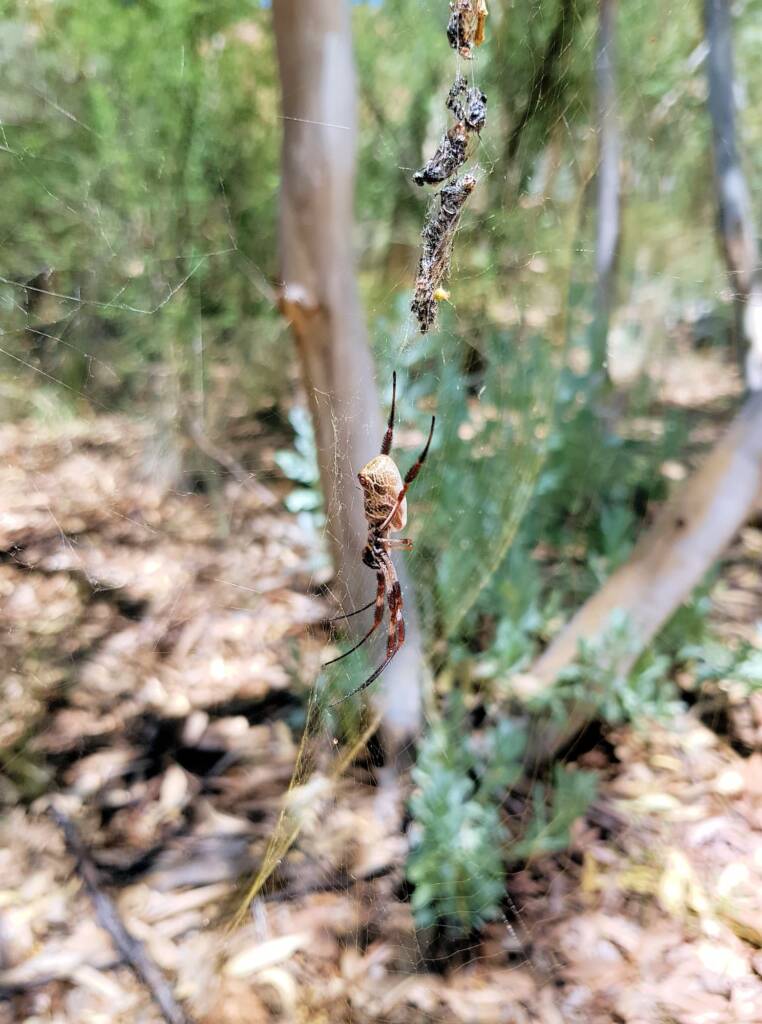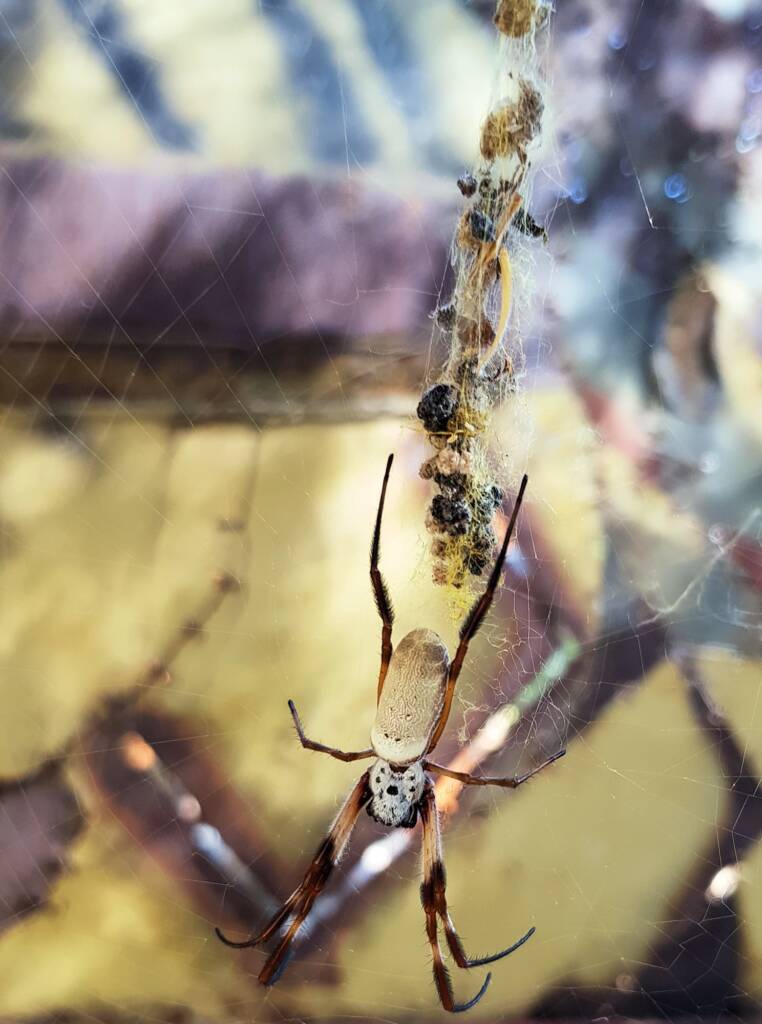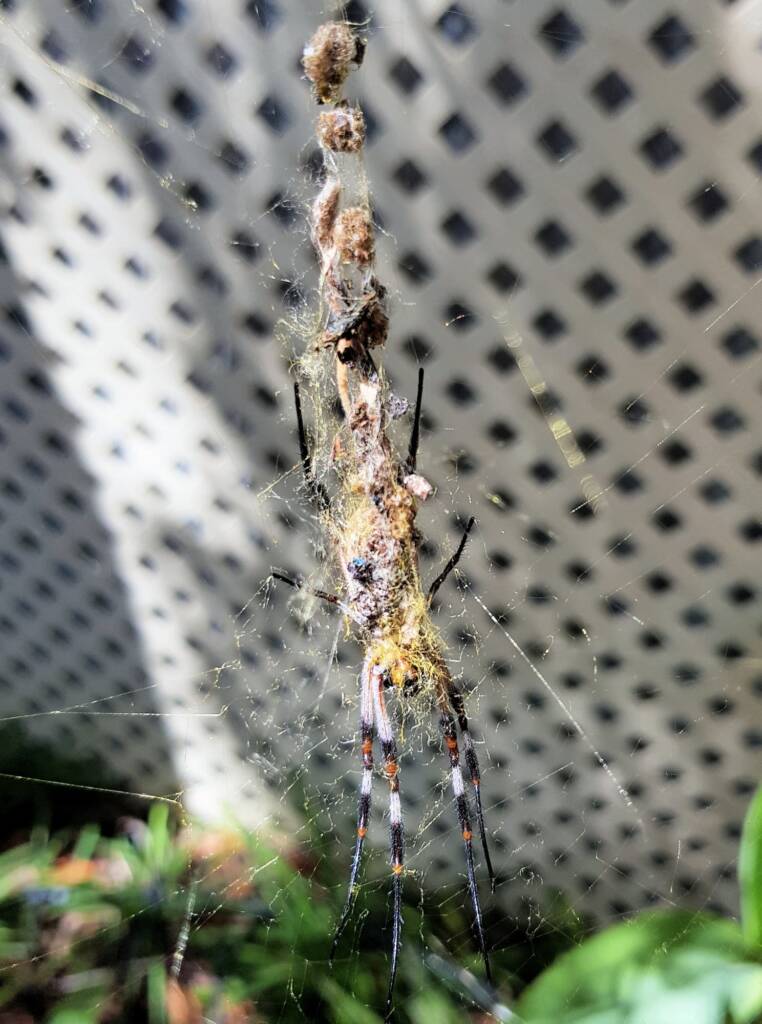Australian Golden Orb WeaverFemale Male Dimorphic Males Juvenile to Mature Female Moult Prey Web of Sex Egg Sac Web
The Australian Golden Orb-Weaver Spider makes a sticky web (that sometimes looks like a messy structure), tucked between plants and shrubs/trees. When allowed to establish itself, it will make a large wheel-shaped orb web, that can be suspended between shrubs/tree branches, poles, wires and buildings. The webs are usually positioned where insects are likely to fly into it.
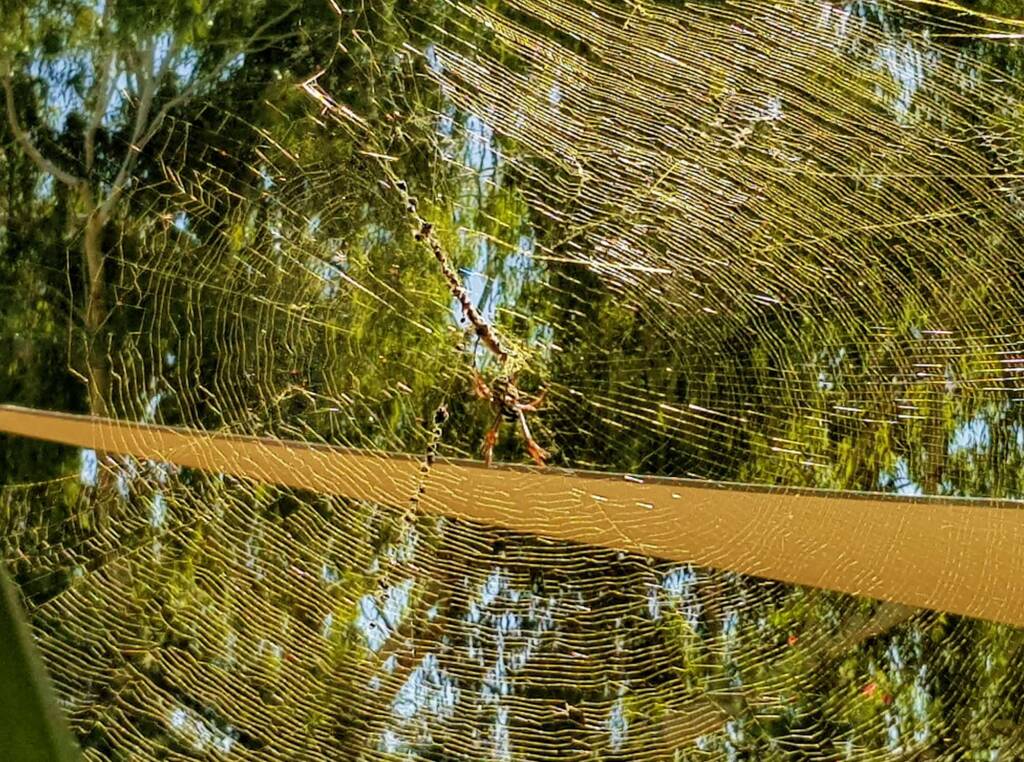
These large, semi-permanent orb webs, are spun from strong silk that has a golden sheen. Sometimes the colour is not so obvious, but when the light is just right, you can see the golden sheen.
“Fourteen thousand spiders yields about an ounce of silk,”
Source: 1 Million Spiders Make Golden Silk for Rare Cloth, Wired 2
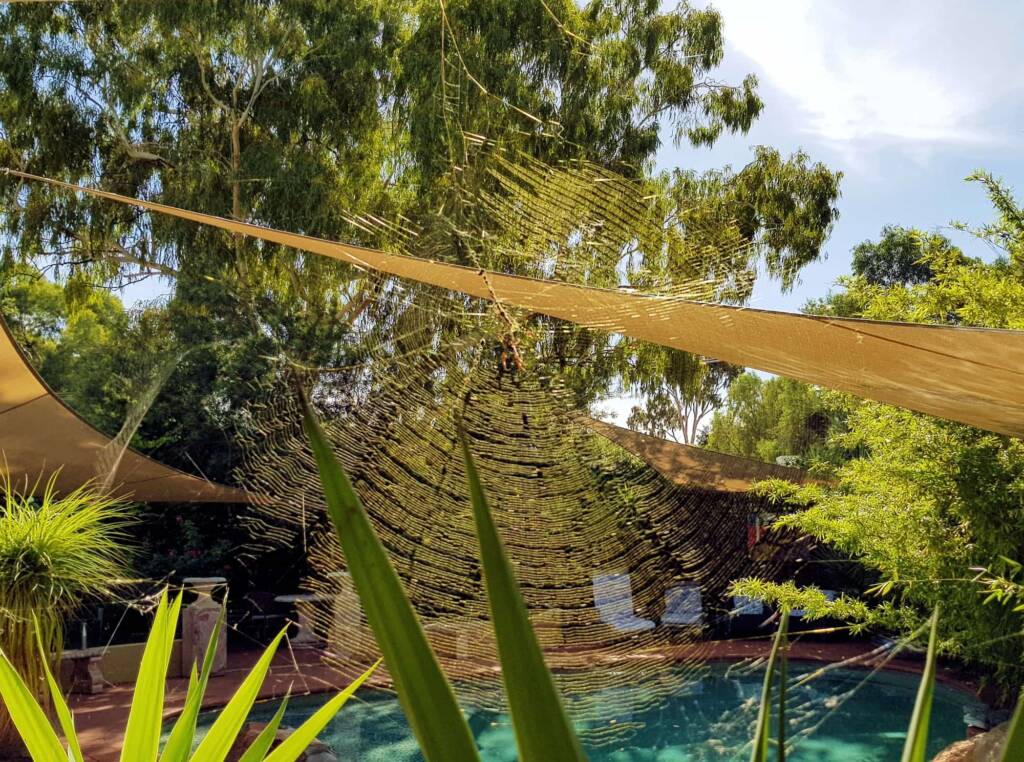
The Golden Orb Weaver remain in their webs day and night. They will add to the web some ‘barrier network’ of threads on one or both sides of the orb web. This “barrier network” is thought to provide some protection from bird attack.
In the following images you can see some of the gold sheen webbing and also the male Trichonephila edulis.
Carotenoids are the main contributors to this yellow color, but xanthurenic acid, two quinones, and an unknown compound may also aid in the color.
Source: Nephila, Wikipedia 3
The female will wait at the hub of the web, with her front legs facing downwards. The
hub itself is not central to the web, but rather set closer to the top edge of the web. The spider is sensitive to any vibration on the web, particularly of any insects that hit the web and become trapped.
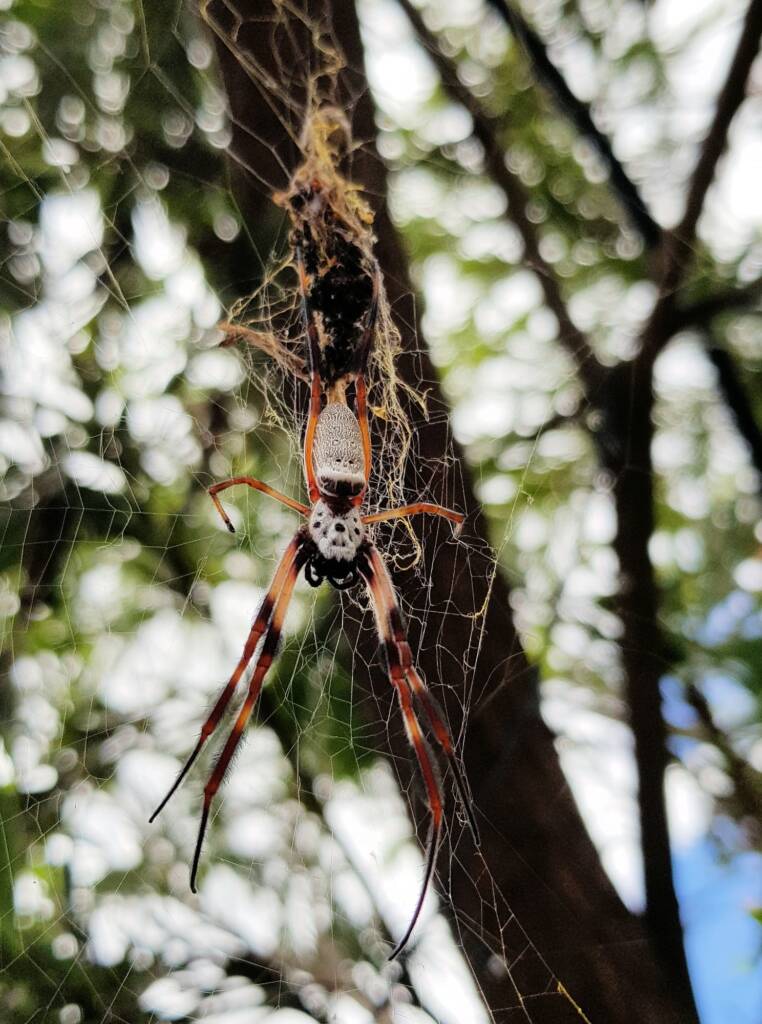
In the good times, you may sometimes see an aggregation of Golden Orb Weavers, with their webs overlapping each other, creating what looks like a tangled network of webs.
Often their will be one or more males on the web, the main male can be close to the female, whilst the other males hang around the perimeter of the web. There may be other juvenile female Golden Orb Weavers, sometimes on the same web or adjoining webs, with the web even hosting other small kleptoparasitic spiders of the genus Argyrodes (such as the Quicksilver Spider, Argyrodes antipodeanus). These small species of spiders will eat the smaller insects that often become trapped on the outer edges of the web.
If these small spiders are detected, the Golden Orb Weavers may kill these interlopers A. antipodianus. One of the mechanism that A. antipodianus implements is to build a “support web”, that allows the spider to move without the Golden Orb Weavers detecting its presence.
The female will have hanging above her in a vertical chain of silk-wrapped parcels, recently caught and dead insects. This is the food pantry / cache, which will be used as needed (especially when food is scarce).
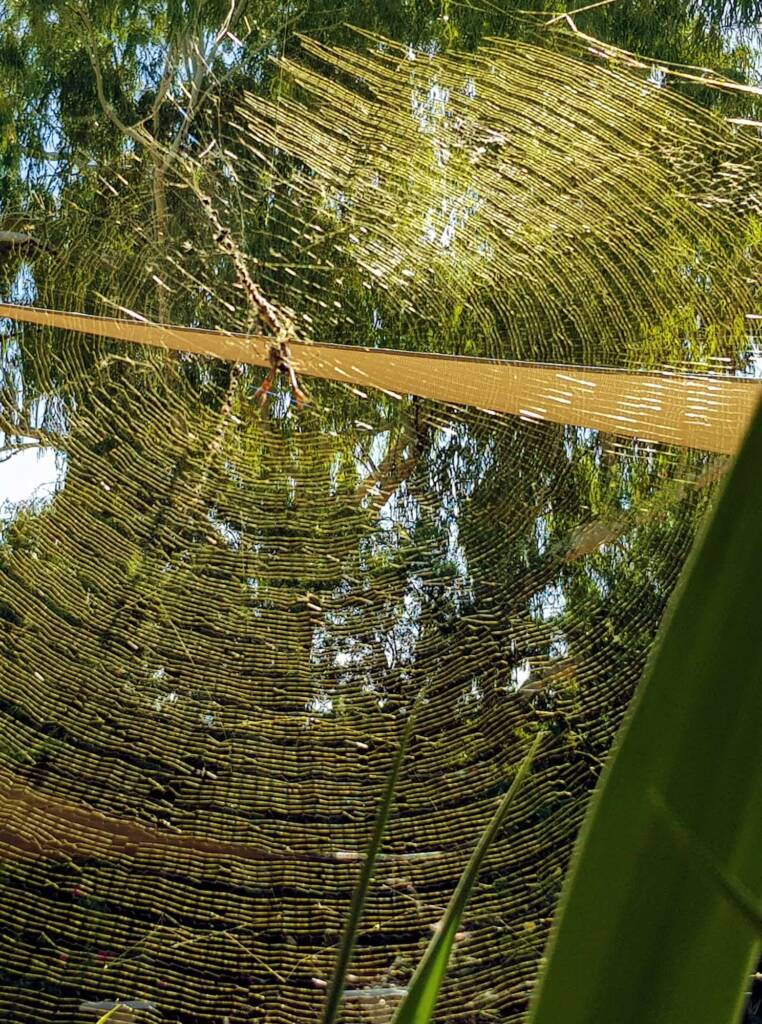
Footnote & References
- Golden Orb Weaving Spiders, Australian Museum, https://australian.museum/learn/animals/spiders/golden-orb-weaving-spiders/
- 1 Million Spiders Make Golden Silk for Rare Cloth, by Hadley Leggett, 23 September 2009, Wired, https://www.wired.com/2009/09/spider-silk/
- Nephila, Wikipedia, https://en.wikipedia.org/wiki/Nephila – Hsiung, Bor-Kai; Justyn, Nicholas M.; Blackledge, Todd A.; Shawkey, Matthew D. (2017-06-01). “Spiders have rich pigmentary and structural colour palettes”. Journal of Experimental Biology. 220 (11): 1975–1983. doi:10.1242/jeb.156083. PMID 28566355.
- Silk: the spider’s success story, Australian Museum, https://australian.museum/learn/animals/spiders/silk-the-spiders-success-story/
- Where have all the spiders gone? Author Martyn Robinson, 30 May 2017, Australian Museum, https://australian.museum/blog/museullaneous/where-have-all-the-spiders-gone/
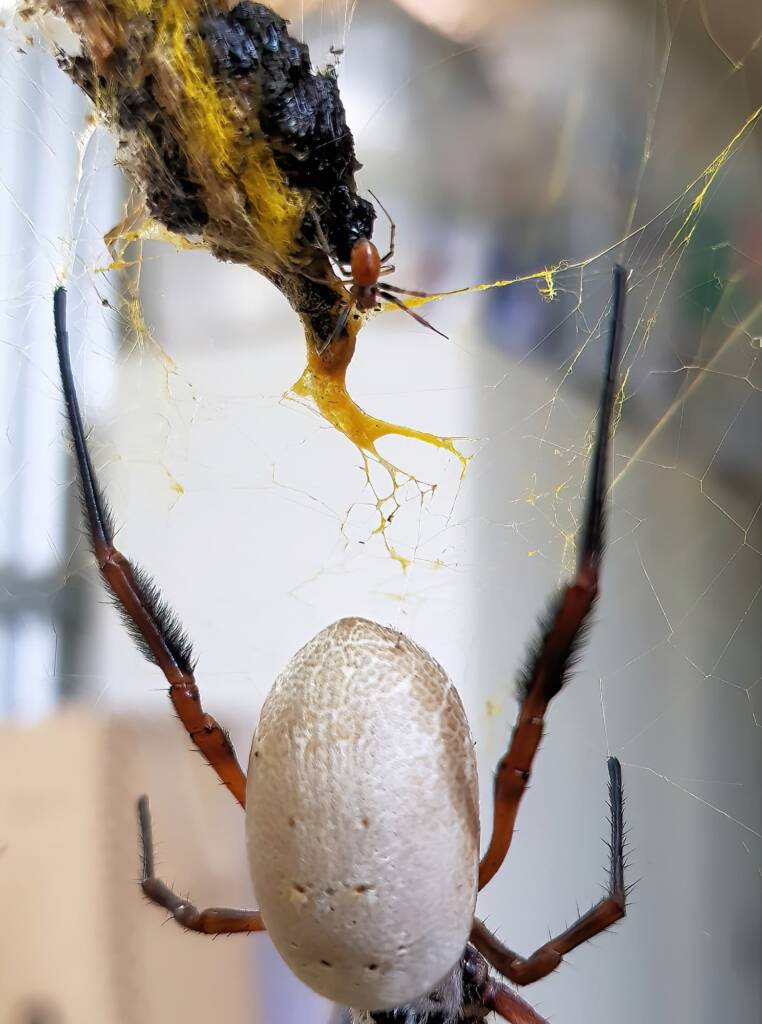
Australian Golden Orb WeaverFemale Male Dimorphic Males Juvenile to Mature Female Moult Prey Web of Sex Egg Sac Web
SpidersIndex of Spider Images Spiders in Australia Araneidae — Orb Weavers Arkys Australian Huntsman Spider Barking Spider Black House Spider Carepalxis sp Celaenia sp Crab Spiders Deinopidae — Net-casting Spiders Dolomedes sp Dolophones sp Flower Spiders Hackled Orbweavers (Uloboridae) Jewel Spider Jumping Spider Long Jawed Spider (Tetragnatha sp) Lynx Spider (Oxyopes) Mangrovia albida Maratus volans Missulena occatoria (Red-headed Mouse Spider) Miturgidae Nicodamidae (Red and Black Spider) Ogre-faced Net-casting Spider Poltys sp (Twig Spider) Redback Spider Scorpion-tailed Spider (Arachnura higginsi) Thomisidae Tiger Spider (Trichonephila plumipes) White-spotted Swift Spider (Nyssus albopunctatus) Wolf Spider

